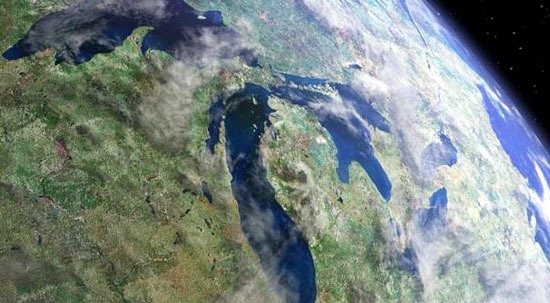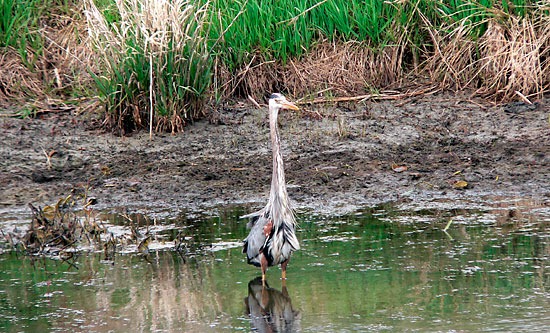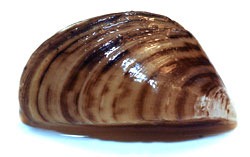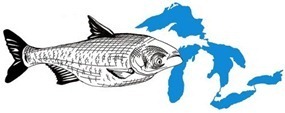Heavy Metals In Lake Michigan Turtles
3Fish probably get the most attention when it comes to gauging the effects that heavy metals have on Lake Michigan’s inhabitants. But overlooked in this realm of research are turtles.
Being that they are a part of the ecosystem too, there is still plenty that scientists can learn by studying turtles in Lake Michigan and its surrounding areas. Take a recent study led by researchers at University of Notre Dame that considered painted turtles and snapping turtles from a number of the lake’s wetlands.
The scientists gathered turtles from wetlands around the mouths of the Grand, Muskegon and Kalamazoo Rivers. Additional wetland sites considered sat around Mona Lake in Muskegon County, Michigan. The wetland sites were chosen based on the types of land use surrounding them, such as industrial or urban.

Painted turtles. (Credit: Flickr User Greg Goebel via Creative Commons BY-SA 2.0)
At these wetlands, researchers used turtle shell and claw fragments. Shells and claws were commonly clipped so that most of the turtles wouldn’t be harmed. A few were sampled for tissues, however.
Researchers found that the metals they measured in claws and shells matched up with levels that they saw in tissues. That confirms their method is just as reliable as turtle tissue analysis, without the injury risk.
From there, scientists compared their findings to the relatively few available studies they could uncover on freshwater turtles, with some relating to turtles in Iran and Kentucky. Their results indicated that the metal levels found in the Lake Michigan turtles were somewhere in the medium range.
Scientists hope the findings will spur more research into the roles that freshwater turtles play. Their full results are published in the journal Environmental Monitoring and Assessment.
What other lake creatures haven’t been as studied as they should be? Are turtles important to lakes in your opinion? Please consider leaving a comment to share your thoughts!














WHERE COME THOSE METAL SEDIMENTS FROM? IS THAT AREA RICH IN METAL ORE? Why are snapper turtles more receptive, is that the same with fish species?
Hi Kris,
The research above was performed in my laboratory at the University of Notre Dame. The heavy metals in Lake Michigan coastal wetlands come from a combination of natural and human sources. During the 20th century, various industries near the lake such as foundries, tanneries, smelters, and refineries released effluents with heavy metals into waterways connected to the lake. Current clean water regulations now prevent such releases, but we live with that legacy of persistent contaminants in our wetlands that tend to ‘bioaccumulate’ in the food web. That is, they are transferred upwards in the food chain from food to consumers (or from prey to predators). Metals behave in this way, and are not readily metabolized by organisms so they tend to accumulate in higher concentrations as you move up the food chain. Because snapping turtles grow to large size, live a long time, and are near the top of the food chain, they are able to accumulate higher concentrations of these metals. The same principle applies to large, longer-lived fish in the Great Lakes. I hope this helps.
Are lake turtles harmed by toxic blue green algae blooms?